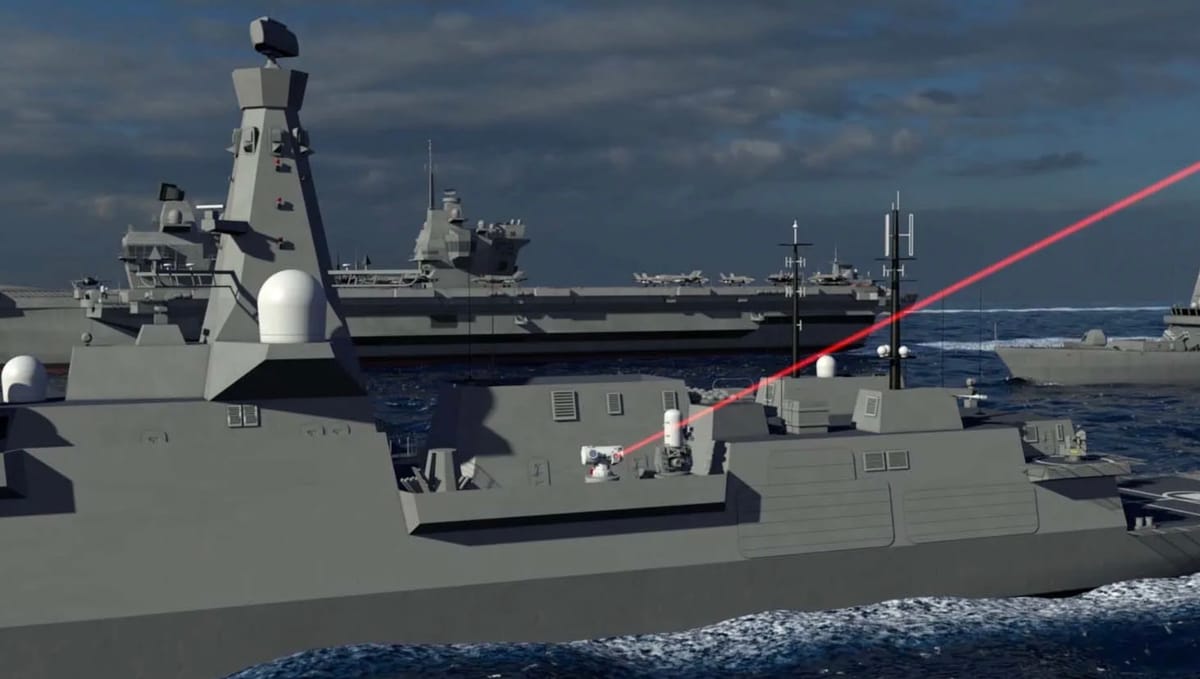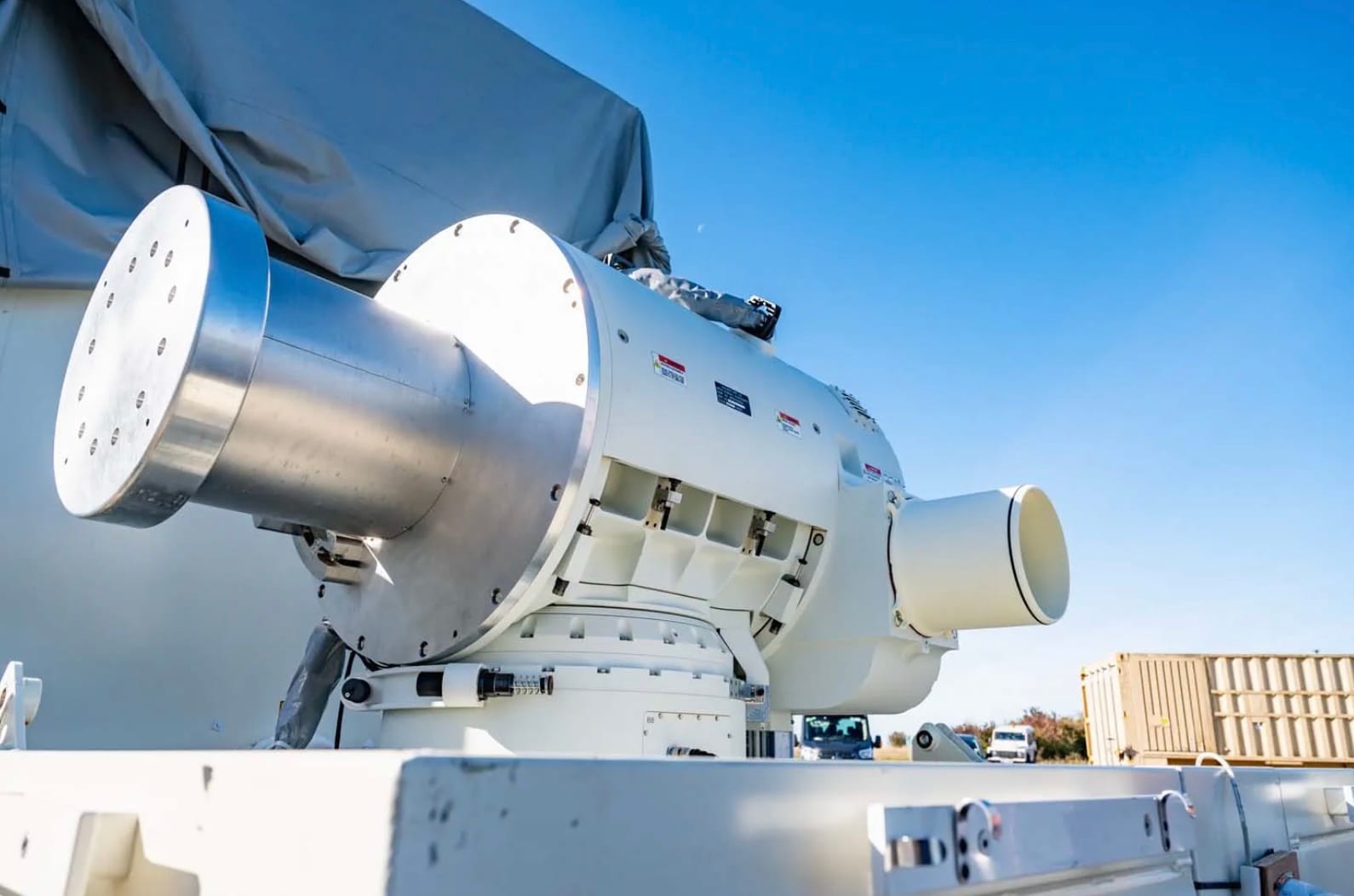UK announces £5 billion investment in laser beams and killer robots
Labour vows to "deliver the biggest increase in defence spending since the Cold War" after hitting Britain with the biggest tax burden since WWII.

The British Government has announced plans to spend £5 billion on new weapons including autonomous killer robot drones and laser weapon technology.
These new battlefield innovations will protect the UK's troops and warships, helping Britain to "become the leading edge of innovation in Nato", according to Labour.
The new spending was announced as part of the Strategic Defence Review (SDR), which is "driven by lessons from Ukraine" and also commits the nation to waging offensive cyber war against enemy states.
The "major funding package" includes more than £4 billion for autonomous systems and £1 billion for Directed Energy Weapons (DEW), including the DragonFire laser. It will create 300 skilled jobs across the country.
When DragonFire is deployed, it will be the first high-powered laser used by any European nation. The first Royal Navy Type 45 destroyer is due to be fitted with the weapon by 2027.
The SDR recommends that an "immediate priority for force transformation" should be a shift towards autonomy. This means large numbers of uncrewed and autonomous systems will be rolled out over the next five years.
Rearming Britain
Other announcements in the SDR include up to 7,000 new UK-built long-range weapons, at least six new munitions and energetics factories in the UK, £1.5 billion to improve the state of military housing and £1 billion for "pioneering technology to spearhead battlefield engagements".
"The new DEW capabilities will give the UK an edge, creating low cost and sustainable alternatives to missiles to shoot down targets, such as drones, at the speed of light, reduce collateral damage and have a low-cost per shot, reducing reliance on expensive ammunition," the government wrote.
"The systems will be tailored to the conditions in which they will operate - whether at sea, on land, or in the air – and will work alongside crewed assets, such as current and future fighter jets.
"The SDR sets a path for the next decade and beyond to transform defence and make the UK secure at home and strong abroad. It ends the hollowing out of our Armed Forces and will also drive innovation, jobs and growth across the country, allowing the UK to lead in a stronger NATO as part of this Government’s Plan for Change.
Defence Secretary, John Healey MP said: "These investments will mean the most significant advance in UK defence technology in decades. We will ensure our Armed Forces have the cutting-edge capabilities they need to meet the challenges of a rapidly changing world.
"We are delivering the Strategic Defence Review’s vision to put the UK at the leading edge of innovation in NATO, by backing British industry and fast-tracking the kit of the future into the hands of frontline troops."
The biggest miliary spend since the fall of communism

A new Directed Energy Weapon will be developed this decade, whilst DragonFire will be fitted on four Royal Navy warships. It's hoped the new weapons will reduce friendly fire (or collateral damage, as our military overlords call it) and reduce reliance on expensive ammunition.
Directed energy weapon technology currently supports 200 high-skilled jobs in the United Kingdom, with an additional 300 positions to be created across the Ministry of Defence and its industry partners. The initiative is part of a broader effort to use defense programs as a driver of economic growth under the government’s Plan for Change.
A new Drone Centre will also be established to accelerate the deployment of small uncrewed aerial systems across the Royal Navy, British Army, and Royal Air Force. The center will serve as a central hub for knowledge-sharing, policy coordination, and engagement with industry.
It will also address emerging legislative issues and integrate battlefield lessons from Ukraine, where drone strikes have surpassed traditional artillery in lethality. Detailed organisational structures for the center are expected to be confirmed in the coming months.
Chancellor of the Exchequer, Rachel Reeves added: "A strong economy needs a strong national defence. That’s why we are delivering the biggest sustained increase in defence spending since the Cold War - putting innovation and industrial strength at the centre of our national security strategy."
It's always reassuring to see that Labour's brutal tax burden (the highest since World War II) is being spent on neat new ways of killing people.
Do you have a story or insights to share? Get in touch and let us know.




